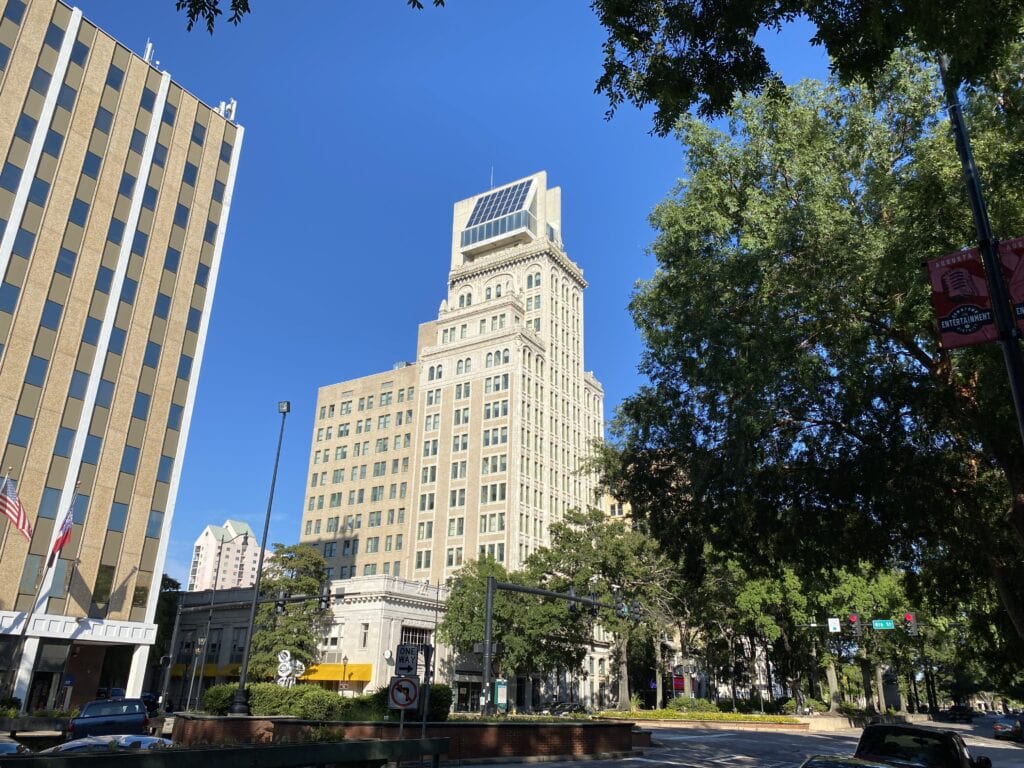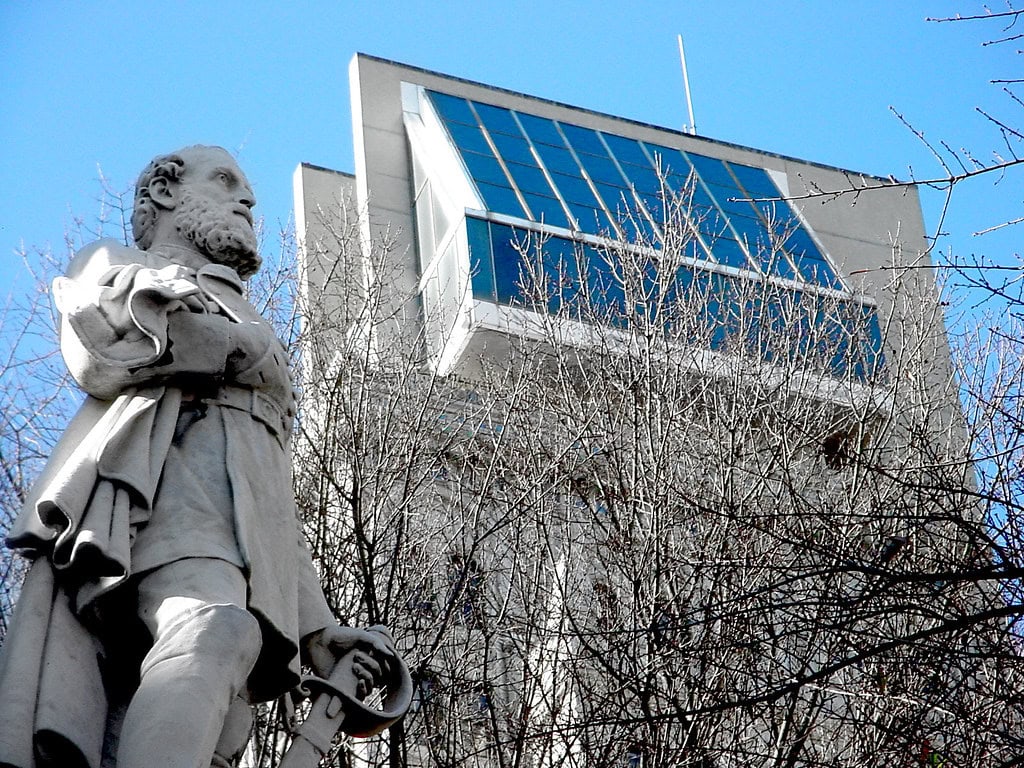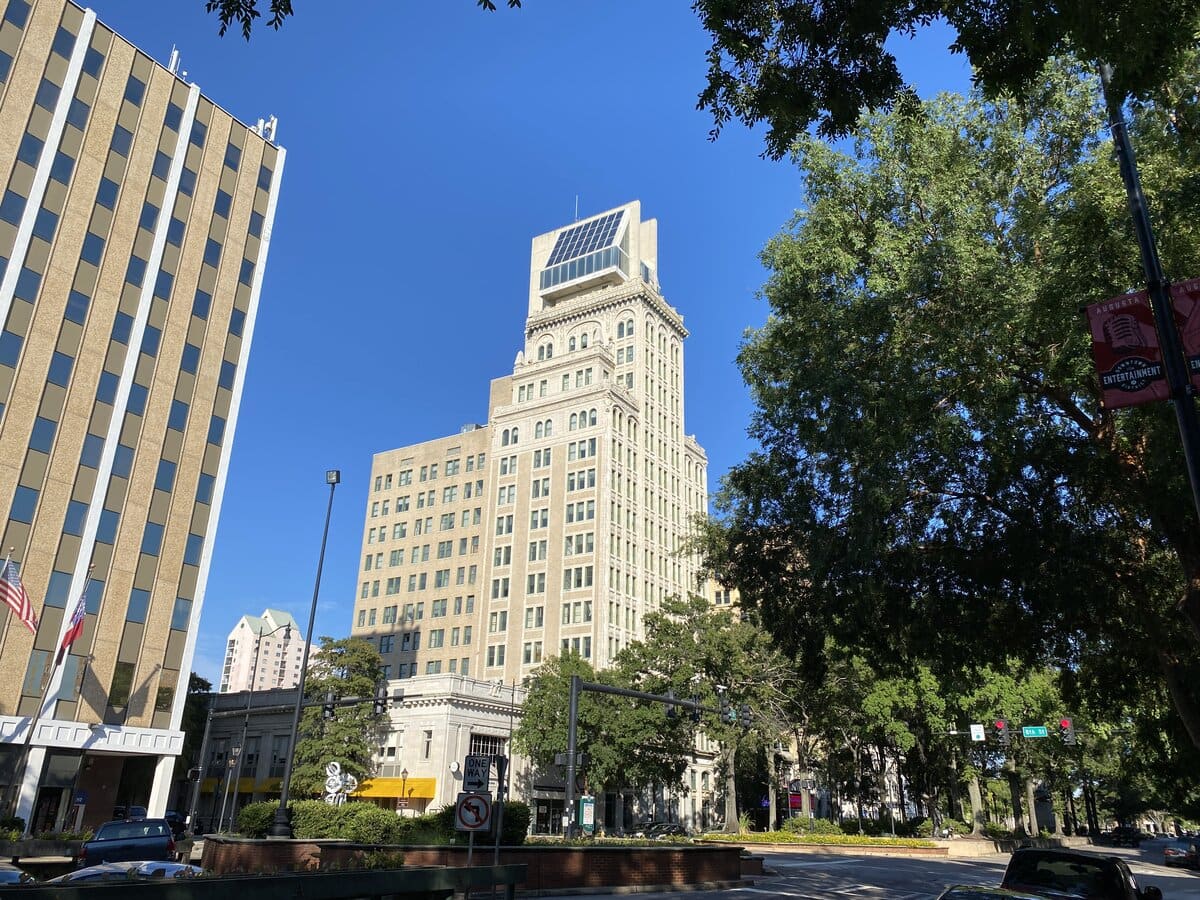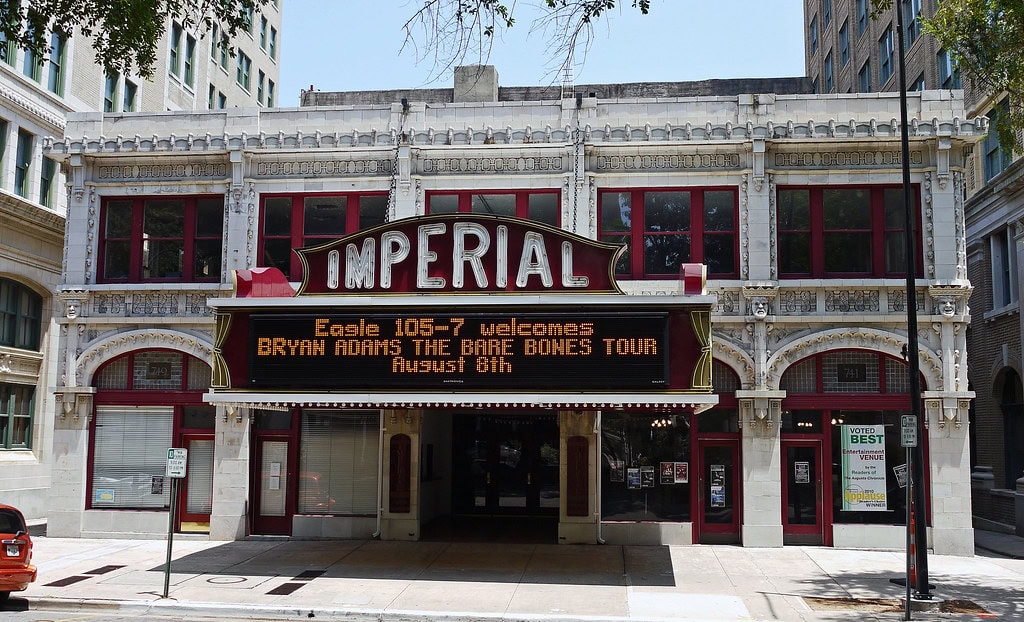The Tower on Broad Street
Downtown Augusta is quiet now. Empty storefronts line Broad Street, and in the middle of it all, the city's tallest building casts its shadow.
The Lamar Building rises 238 feet, 17 stories of steel and stone, topped by a glass penthouse that locals call the toaster. For more than a decade, it has stood mostly vacant, its windows reflecting not commerce but absence.
Fire and Ambition
When construction began in 1913, the building was meant to symbolize a new Augusta.
It was commissioned by the Empire Life Insurance Company, with architects from Augusta and New York working together.
Then, in March 1916, flames tore through downtown. The Great Fire consumed more than 30 blocks.
Newspapers wrote of molten glass from the half-built tower blowing across the street.
Work paused. Only in 1918 did the tower finally open, renamed the Lamar Building in honor of Supreme Court Justice Joseph Rucker Lamar, a son of Augusta.
Shifting Names, Shifting Fortunes
In its early decades, the Lamar Building housed finance companies and lawyers.
For a time, it was known as the Southern Finance Building. By mid-century, its green tiled roof made it a marker on the skyline.
But tenants came and went. Each new owner promised revival; each struggled against the same decline spreading through downtown.

A Futuristic Crown
In 1973, three businessmen bought the Lamar and called in a world-famous architect.
I. M. Pei had already designed buildings that remade skylines in Paris, Hong Kong, and Cleveland.
For Augusta, he proposed a penthouse unlike anything in the South, a cube of glass perched on the roof like a crown.
Locals gave it another name: the toaster. To Pei, it was a gesture of modernism. To others, it was an oddity.
A massive illuminated cross was added to the roof in 1976, glowing above Broad Street until the building again changed hands.
Darkness
By the late 2000s, the Lamar was empty. Elevators stood still. Ornate staircases gathered dust.
Inside the penthouse, graffiti spread across Pei's walls of glass. Homeless men found shelter there.
At night, the tower was black; the city's most recognizable silhouette turned into a husk.
In 2011, an architecture critic mocked the penthouse as a "Darth Vader helmet." Augusta residents had stopped looking up.

Hope Deferred
Developers announced plans in 2021 to turn the Lamar into apartments.
By 2023, scaffolding appeared and crews moved through its empty halls, clearing space for 76 new units and street-level retail. The project was meant to return light to downtown Augusta.
Progress has slowed, but not ended. In 2024, the Connecticut firm Lockwood and Mead acquired the building, pledging to convert it into 78 market-rate apartments and shops.
The company is pursuing state and federal tax credits, a process complicated by Lamar's historic status.
Rising interest rates, inflation, and high construction costs have left the tower stalled again. City officials say the developers remain committed, but the timing is uncertain.
The glass penthouse, designed by I. M. Pei in 1976, will stay. If the work begins, it could take 18 months to complete.
For now, the Lamar remains in limbo — vacant but not forgotten, its future tied to whether financing can catch up to ambition.
What Remains
On the roof, the glass toaster still catches the light of sunset.
The details of the original lobby, pineapples carved in stone, art deco flourishes, endure behind boarded doors.
The Lamars' story is written into Augusta's skyline, a monument to ambition, to fire, to reinvention that never arrived.
For now, the city lives with the question of whether the toaster is a relic of failure or a foundation for whatever might come next.





